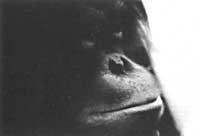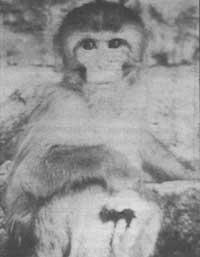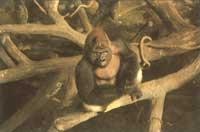Marie Eugene Dubois
1990/10/01 Azkune Mendia, Iñaki - Elhuyar Fundazioa Iturria: Elhuyar aldizkaria
Marie Eugène François Thomas Dubois was born in Eijsden, southern Holland, on 28 January 1858. As a young man he studied Medicine and Natural History and from then on he was highlighted the orientation towards anatomy and geology.
Darwin published his evolutionary theory in 1859, so many scientists were concerned about the origin of man. A link was missing to form the chain to the first ancestor monkey of man, and Dubois found that level again.
Darwin himself, Lyell and Huxley were in charge of applying the theory of evolution to the human being by natural selection, but as real proof there were only some old stone tools and a few remains of the human body.
Around 1850 the skeletons of the Man of Neanderthal were discovered. Some scientists, like Paul Broca, claim that they were remnants of an ancient human species, but others (like Rudolph Virchow) spoke of humans probably deformed by an accident or disease.

However, pre-human fossils were needed, which in turn were more evolved than monkeylike ancestors. They lacked an intermediate level and Dubois was looking forward to finding that level. In Dubois's view, the first man had to live in places where there are still many monkeys; in Africa and in Southwest Asia. In Africa there are gorillas and chimpanzees, and in South Asia orangutan and liver. The liver was the paleontologist Dubois who liked it most, since Ernst Haeckel said it was the monkey closest to the human being. Since then it has been shown that this claim is not correct.
While serving in the army in 1889, the Dutch government sent her to Java Island to study her fossils. (Do not forget that at that time Java was the Dutch colony). Dubois was very happy, of course, because his dream was that. In a few years he discovered a skull, a femur and two teeth. They were certainly fossils of the first human being. The skull was much larger than that of the present monkeys, but at the same time much smaller than that of any present human being. The teeth were intermediate between the teeth of man and monkey.
Dubois called Pithecanthropus erectus (a man of a perso monkey) when he had those bones and published all his details in 1894. At the time when Dubois' work was published, great debates arose. And the origin and evolution of the human being are in themselves very thorny subjects and even more so at that time. In addition, the exact affirmation of the steps of human evolution based on pieces of bone seemed an abuse.
Similar discoveries have since been made in China and Africa, and little by little the catdonas have been determined to the origin of the human being through the accumulation of evidence. In the case of the human being, therefore, it has been possible to pass the evolution of the level of theory to the level of practical evidence. In this work, Dubois has also been a pioneer.
Dubois returned to Europe in 1895 and four years later he was appointed professor of geology at the University of Amsterdam.
Dubois suffered in the last years of his life a rare change in his thinking. When he was old and bored with so much controversy, he changed his mind. When the community of anthropologists was convinced that the man of Java or the being Pithecanthropus erectus was an ancestor of man, he began to deny it. He insisted that these fossils belonged to the skeleton of some monkey and not to the skeleton of the first man.
Eugène Dubois died in the late eighty-six years in the Belgian village of Halen on 16 December 1940. This year will be the centenary of his death.

Gai honi buruzko eduki gehiago
Elhuyarrek garatutako teknologia




